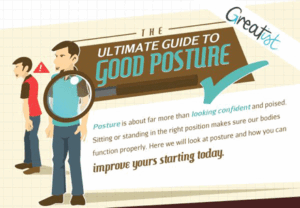Running is as easy as 1-2-3
There are two kinds of runners in the world; those who love it and those who don’t. I am definitely the latter of the group. However, the one thing they all have in common is, you guessed it, running. Regardless of whether you are enjoying your time on your run or not, we all know that it is the best way to impact our health goals of staying in shape, losing weight, relieving stress or whatever it is why we feel the need to run. What if I told you that all you need to know are three simple things?
 Running certainly has its benefits, we all know this. The problem arises when injuries creep up on us while doing the one thing we know is intended to keep us healthy. You can choose not to run. That would eliminate your chances all together of getting injured from running, guaranteed, or you can take these three simple tips to heart and implement them on your next run. Granted these will take some practice and patience, but when observed routinely, your risk of injury is certain to diminish, making your opinion on running more personal than physical.
Running certainly has its benefits, we all know this. The problem arises when injuries creep up on us while doing the one thing we know is intended to keep us healthy. You can choose not to run. That would eliminate your chances all together of getting injured from running, guaranteed, or you can take these three simple tips to heart and implement them on your next run. Granted these will take some practice and patience, but when observed routinely, your risk of injury is certain to diminish, making your opinion on running more personal than physical.
Tip #1: Know Your Cadence
Cadence is the number of steps you take per minute. The common number for optimal cadence is 180 steps per minute, but if you are trying to run at an easy comfortable pace, you should be running at least 170 steps per minute. By staying in this range, you will reduce the impact forces on your legs, cut your injury risk, and even improve your running efficiency. How? With a shorter, faster stride, you’re “bounding” less and not introducing the stress that accompanies longer, more impactful strides. In other words, you’ll get hurt less often and probably get faster (Yah!).
Tip #2: Proper Foot Strike
Before you rush out to by that super cool pair of running shoes that will help you to run faster, jump higher, and solve world hunger, you must first understand that contrary to what Mars Blackmon tells us, “It’s not about the shoes”. It is more about where your foot strikes the ground. Many of us start out to fast, placing our foot out in front when we are striking the ground, this will both increase the level of impact on the body and slow your momentum down with each step. Your foot should strike the ground directly under your hips, propelling you forward. Changing your foot strike, although a bit awkward at first, will reduce the impact on your legs and cut your injury risk by creating a more fluid and efficient stride.
Tip #3: Run Tall and Proud
Remember all those times your mom used to tell you to stand up straight? Well, she has now officially become your running coach. Too many of us feel the need to “lean in” when we are running, but that is not a recommended strategy when trying to be most efficient in our running. We all want to have a forward lean, but that should not be happening at the waist, but rather at the ankles, where it will naturally occur. To help keep you honest, try to imagine that you have a string coming out of the top of your head and some giant puppet master is holding you erect. Too much forward lean will create and energy depletion, causing your body to work harder than it is already being asked.
I hope these tips will provide you with some reprieve from the onset of injury when running. Certainly, there are a variety of factors we must consider beyond just these simple ones, but remembering the fundamentals is the most effective way of evolving with anything we are trying to improve upon.
Ready to #feelbetter?
You're just a click away from a wicked good massage!
-

60 Minute Massage Gift Card
$170.00 Add to cart -

90 Minute Massage Gift Card
$255.00 Add to cart -

Mini Aer Small Room Air Purifier
$149.00 Add to cart -
Sale!

Thera-Pearl Sports Pack/Hot Cold
Original price was: $14.99.$12.99Current price is: $12.99. Add to cart -

3 Somadome Sessions Gift Card
$135.00 Add to cart -

TheraBand CLX Connective Loop
$14.99 Select options -

6 Somadome Sessions Gift Card
$270.00 Add to cart -
Sale!

Biofreeze
Original price was: $14.99.$12.99Current price is: $12.99. Add to cart
Passion Mountain
I was at an event recently and was asked by somebody how I could STILL be so passionate for what I do. He said, “What I mean is that you talk about what you do with the passion of child flipping through a new pack of baseball cards. I wish I was that passionate about…
Read MoreFish You Should Scale Back On
New Englander’s love their seafood and we deepen our love affair every summer when our favorite crustaceans, ‘lobstah’ is a plentiful. But what is the best seafood for us and what are the ones that we should be staying away from regardless of how yummy they may be? Monterey Bay Aquarium has combined data from…
Read MoreSports are a Great Metaphor
It’s no secret that my life has always revolved around athletics. From my early days playing pop warner football, through my college years of lacrosse and on into the various community leagues since, being part of a team has always been where I feel most comfortable. What I enjoy most about being part of a…
Read MoreWhat is an Expert?
“An expert is someone widely recognized as a reliable source of technique or skill whose faculty for judging or deciding rightly, justly, or wisely is accorded authority and status by their peers or the public in a specific well-distinguished domain.” – Wikipedia This past month I flew to Atlanta to present a few classes in…
Read MoreThe Power of a Hug
Originally Posted 5/1/2014; following the 1 year anniversary of the Boston Marathon Bombings and our mission to rebound after these horrible attacks on our city. We helped orchestrate the ‘One Run for Boston’; a 3328.2 NON-STOP running relay from LA to Boston, raising over $500K for the victims and survivors of the events of 4/20/2013.…
Read MoreTips from the Table
Without fail, every marathon season, I am asked by my patients, what kind of advice I would offer up to them as they prepare to run the Boston marathon. I first admit that I have never (nor will ever) run a marathon, but given my unique insight of spending 1000’s of hours alone in a…
Read MoreShoulder Impingement
The glenohumeral joint is a highly complex articulation. It has the greatest range of motion of any joint in the body. However, its increased motion occurs at the expense of stability, requiring the soft tissues to play a more critical role in maintaining joint integrity. As a result of increased mechanical demands, numerous soft-tissue injuries…
Read MoreTrain, train, train. Train of fools.
In my seventeen years as a massage therapist, I am still amazed by some of the things I see in my office. Being situated 1/10th of a mile from the finish line of one of the most prestigious marathons in the world, the Boston Marathon, we see more than our fair share of runners coming…
Read MoreAchilles Tendon Disorder
Achilles Tendon Disorder Massage therapists see many clients with active lifestyles. Running, jumping, dancing, climbing, or any number of other activities can put serious stress on the Achilles tendon (AT). AT disorders also can contribute to biomechanical disorders in the foot and lower extremity. That is why it is important for the massage practitioner to…
Read More


